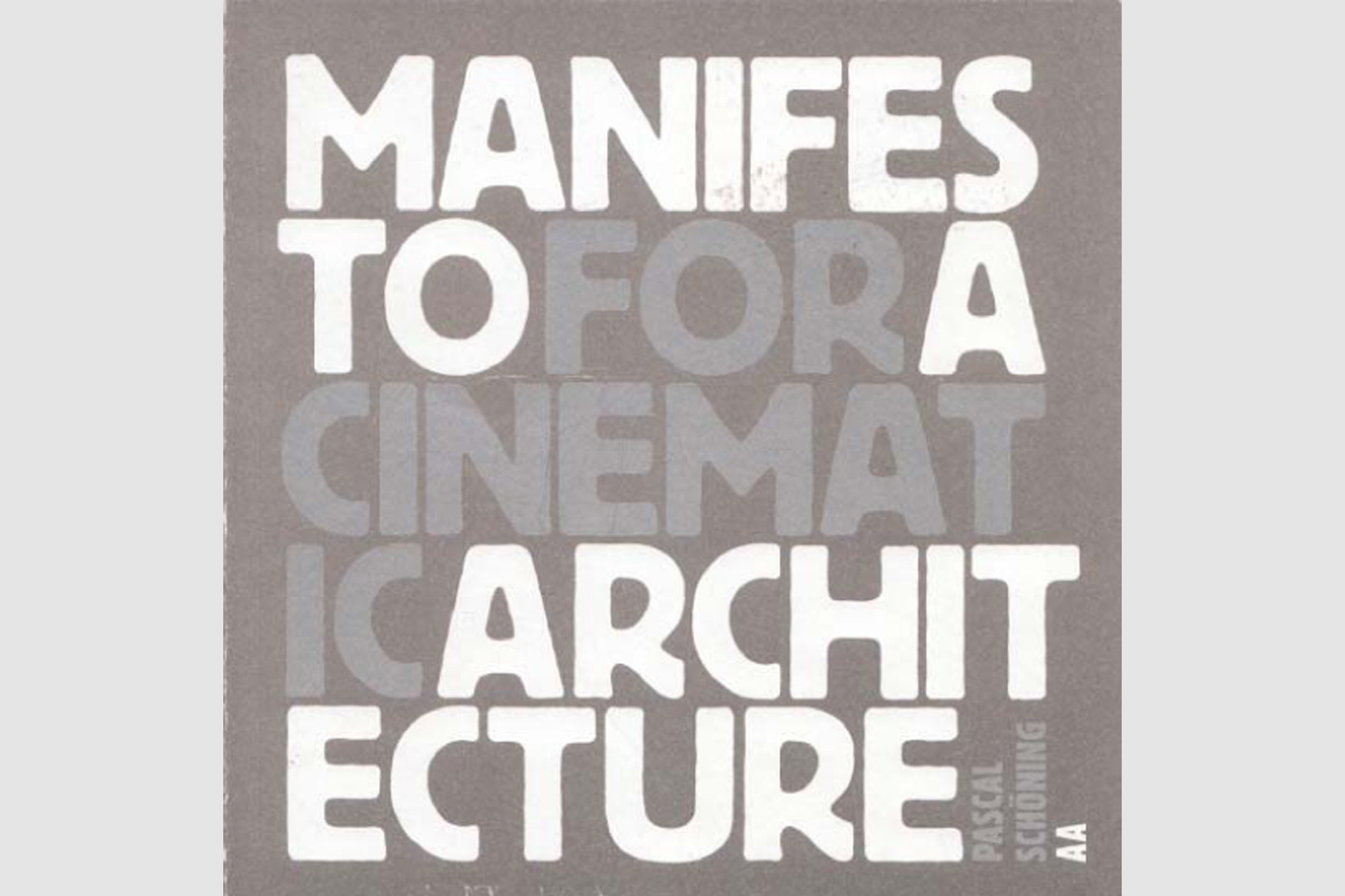The Ultimate Artifice for the Perfect Architectural Dream
The subject posed in this paper revolves around the possibility and acceptance of film as a critical platform for the production of an architectural discourse within the cultural institution as well as practice. Architecture, as we know it, is the conceptual framework of any given urban environment, that is the metropolis. Nevertheless, it is more than building design. It is a critical discourse that embraces many facets whose main concern is spatial critique, analysis and dissemination. In this perspective, the language and production of film incorporates all those characteristics. Being a medium of representation, film is definitely an interpretative act whose scope ranges from writing the script, which is to say the narrative; set design, which includes model making (scale dependable); human interaction (emotional relationships); creative vision (from visionary paintings to technical drawings); optical apparatus (cameras, view points and travelling sequences), location and site surveying; and the list goes on. What seems relevant in this argument then, is the way in which architecture is critically addressed and accepted by the channels of cultural diffusion: newspapers, periodical publications, professional magazines, exhibitions and their accompanying catalogues, radio and television, advertising and, adding on to this, the film industry.
The promotion of film in the institution of architecture defended here is less an argument and more of an attempt to draw attention to this disregarded sign. It seems that the architectural discourse nowadays has taken for granted this relationship, probably due to the commercial weight of the entertainment industry and market demands, which might have helped to dislodge its invaluable assessment to the discursive critical thought.
Fiction may be regarded as the ultimate genre that is capable of combining all knowledge (science, technology and imagination) towards one specific goal, which is to anticipate the future for the betterment of humankind. It is by means of this fantasy that possible worlds–real and imaginary–may intentionally collide to erupt a different one, not entirely new, but with different motivations. When this happens, it revolutionizes past dogmas and can permanently alter the way we perceive and understand the surrounding present and, therefore, opening the expectations for the coming community.
The spectatorial engagement is the veritable assessment of the filmic experience. By imagining oneself to reside in a space other than the one presented in reality is to activate a haptic experience, which ultimately resembles a dream state. It is within this dream state that all spatial narratives may be combined to forge a possible direction for the spectatorial mobilization. In this sense, the medium of film formulates a fictional narrative where truth, artifice and memory are all intertwined, suggestive of the way in which reality and fiction are shaping our experience of contemporary art, life, architecture, and after all, history. As a result, one might assert Giuliana Bruno’s singular and passionate voice in this regard when she posits that the perfect architectural dream is a filmic dream: pictures become an environment, architecture becomes film.
Fiction may be regarded as the ultimate genre that is capable of combining all knowledge (science, technology and imagination) towards one specific goal, which is to anticipate the future for the betterment of humankind. It is by means of this fantasy that possible worlds–real and imaginary–may intentionally collide to erupt a different one, not entirely new, but with different motivations. When this happens, it revolutionizes past dogmas and can permanently alter the way we perceive and understand the surrounding present and, therefore, opening the expectations for the coming community.
The spectatorial engagement is the veritable assessment of the filmic experience. By imagining oneself to reside in a space other than the one presented in reality is to activate a haptic experience, which ultimately resembles a dream state. It is within this dream state that all spatial narratives may be combined to forge a possible direction for the spectatorial mobilization. In this sense, the medium of film formulates a fictional narrative where truth, artifice and memory are all intertwined, suggestive of the way in which reality and fiction are shaping our experience of contemporary art, life, architecture, and after all, history. As a result, one might assert Giuliana Bruno’s singular and passionate voice in this regard when she posits that the perfect architectural dream is a filmic dream: pictures become an environment, architecture becomes film.
International Conference on Philosolphy and Film,
"Thingking Reality and Time Through Film",
Faculty of Letters of the University of Lisbon, Portugal, 2014
Published Paper (Download PDF)
"Thingking Reality and Time Through Film",
Faculty of Letters of the University of Lisbon, Portugal, 2014
Published Paper (Download PDF)



